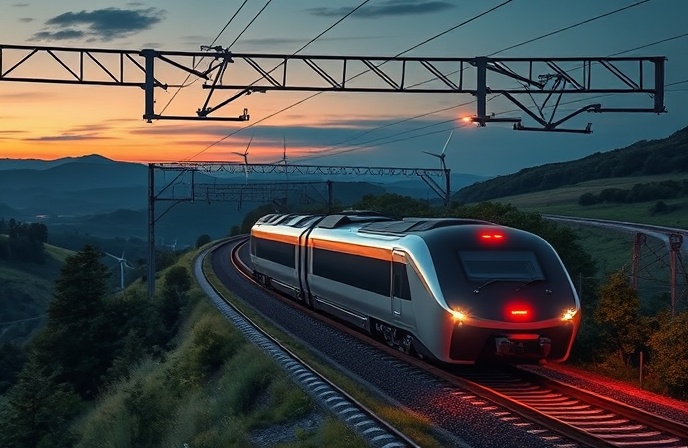NJ Rail Upgrade: Raritan River Bridge Project Boosts NJCL Capacity
New Jersey’s Raritan River Bridge replacement project, a $446M FTA-funded initiative, begins. New lift bridge improves NJCL rail safety and capacity.

Raritan River Bridge Replacement Project Marks Major Milestone for New Jersey Commuters
New Jersey is embarking on a new era of rail infrastructure, with yesterday’s groundbreaking ceremony marking a significant step forward in the Raritan River Bridge replacement project. Governor Phil Murphy, alongside New Jersey Transit (NJ Transit) leaders and state officials, initiated the construction phase of the central lift span, designed to revolutionize rail transit on the North Jersey Coast Line (NJCL). This project, crucial for maintaining and enhancing the reliability of the NJCL, will replace the aging swing bridge, which has been in service for over a century. The new bridge, spanning the Raritan River between Perth Amboy and South Amboy, will improve safety, efficiency, and capacity. The project is being funded in part by a $446 million grant from the Federal Transit Administration (FTA). This article will explore the details of this pivotal infrastructure undertaking, its technical specifications, and its long-term impact on the region’s transportation network.
Innovative Bridge Design for Enhanced Marine Navigation
The centerpiece of the project is the construction of a new vertical lift bridge. This design allows the central span to be raised vertically, providing ample clearance for marine traffic to pass underneath. This method contrasts sharply with the existing swing bridge, which requires rotation and can significantly delay both rail and water traffic. The new bridge will feature a two-track movable span, slightly offset from the original alignment for optimal structural integrity and functionality. The shift in design underscores the modernization efforts to meet current engineering standards and improve operational efficiencies of the NJCL. The vertical lift design is intended to minimize delays and enhance safety compared to the existing bridge design.
Technical Specifications and Construction Scope
The project, awarded to Skanska Koch Inc., encompasses a $444 million construction contract, with an additional 5% allocated for contingencies. The comprehensive scope includes the construction of the lift bridge and its flanking spans, as well as upgrades to communication systems, signal infrastructure, and the overhead catenary system (OCS). The OCS is the network of wires that supplies electricity to the trains. Other site work and infrastructure adjustments are also included. This comprehensive approach demonstrates a commitment to a fully integrated and modernized rail corridor. The construction plans must ensure the new bridge seamlessly integrates with the existing NJCL mainline tracks at both its northern and southern ends, ensuring smooth transitions for rail traffic.
Addressing Aging Infrastructure and Ensuring Resilience
The existing Raritan River Bridge, which has been in operation since 1908, is nearing the end of its operational life. Critically, the structure was not designed to withstand the lateral forces generated by ocean surges, a growing concern with the increasing frequency and intensity of extreme weather events. The new bridge is designed to meet the current, stricter load requirements and be more resilient. The replacement project will, therefore, increase the reliability and safety of rail services on the NJCL. This investment in modern infrastructure is critical to safeguard the transportation of the region against potential disruptions and ensure its long-term operational viability.
Conclusion
The commencement of the Raritan River Bridge replacement project signifies a crucial advancement for the NJCL and New Jersey’s overall transportation network. The construction of the vertical lift bridge and its supporting infrastructure represents a critical investment in modern, resilient rail infrastructure. The project directly addresses the shortcomings of the aged swing bridge, increasing operational efficiencies, improving safety, and enhancing the capacity of the NJCL. The funding from the FTA exemplifies the federal government’s commitment to improving public transit. This bridge replacement is critical for the future of rail travel in this busy area. The project provides the rail transportation system with the tools needed to better respond to the challenges of today’s transit needs while setting a standard for proactive infrastructure planning for other transit agencies across the country. By enhancing reliability and efficiency, the new bridge will improve the travel experience of New Jersey commuters for decades to come.


